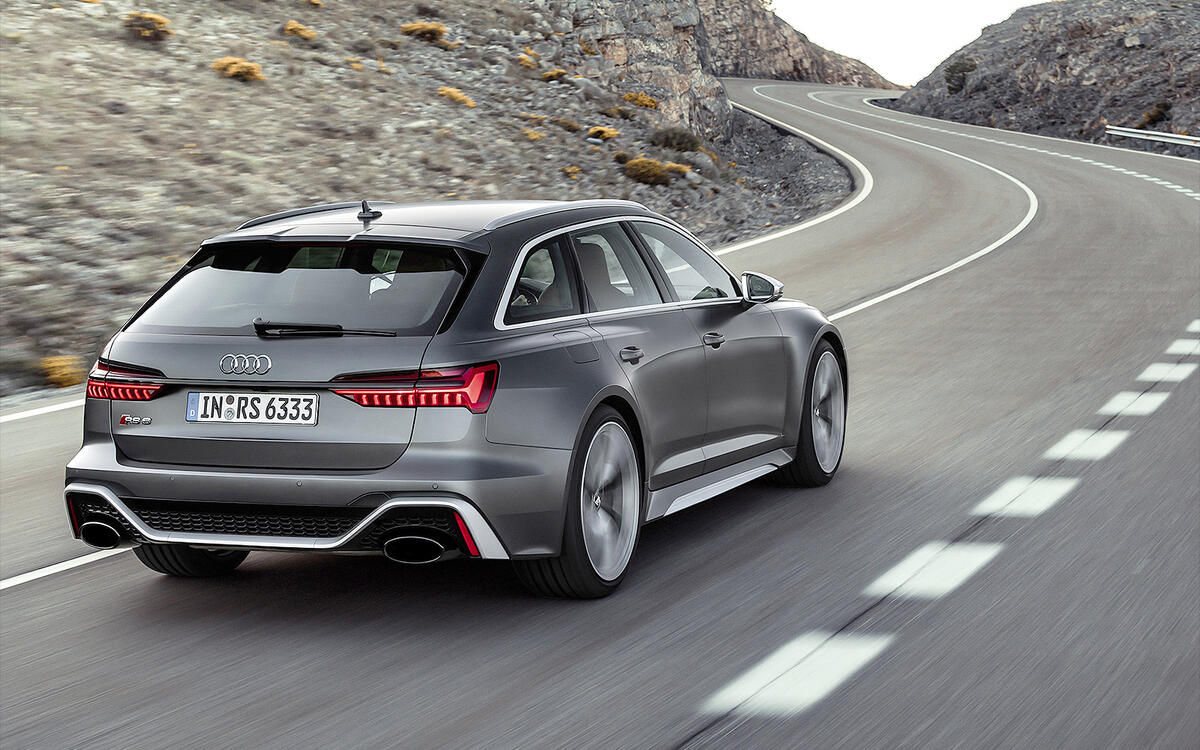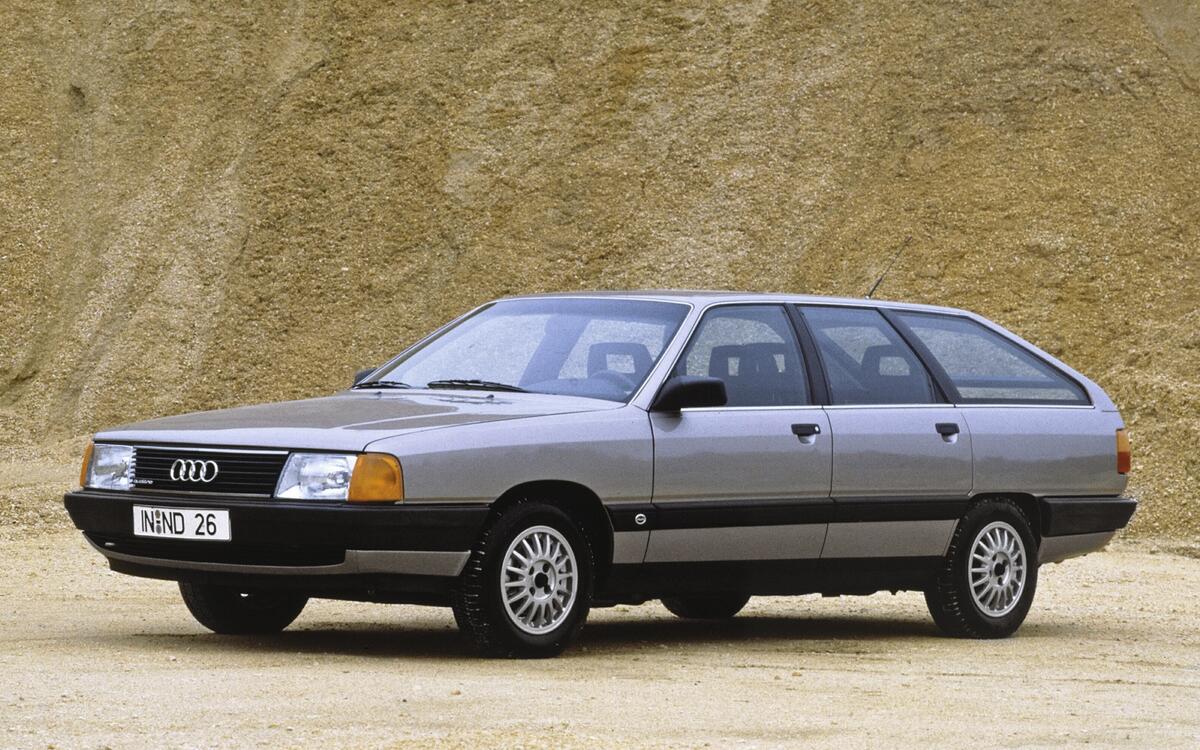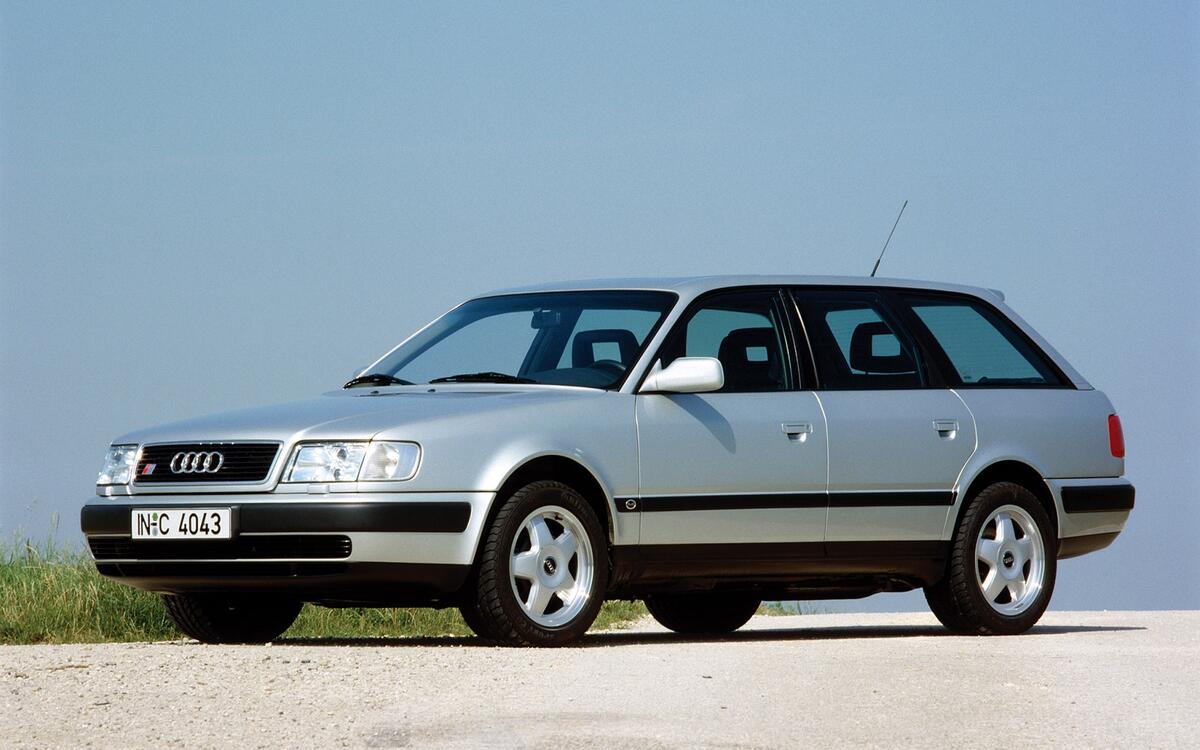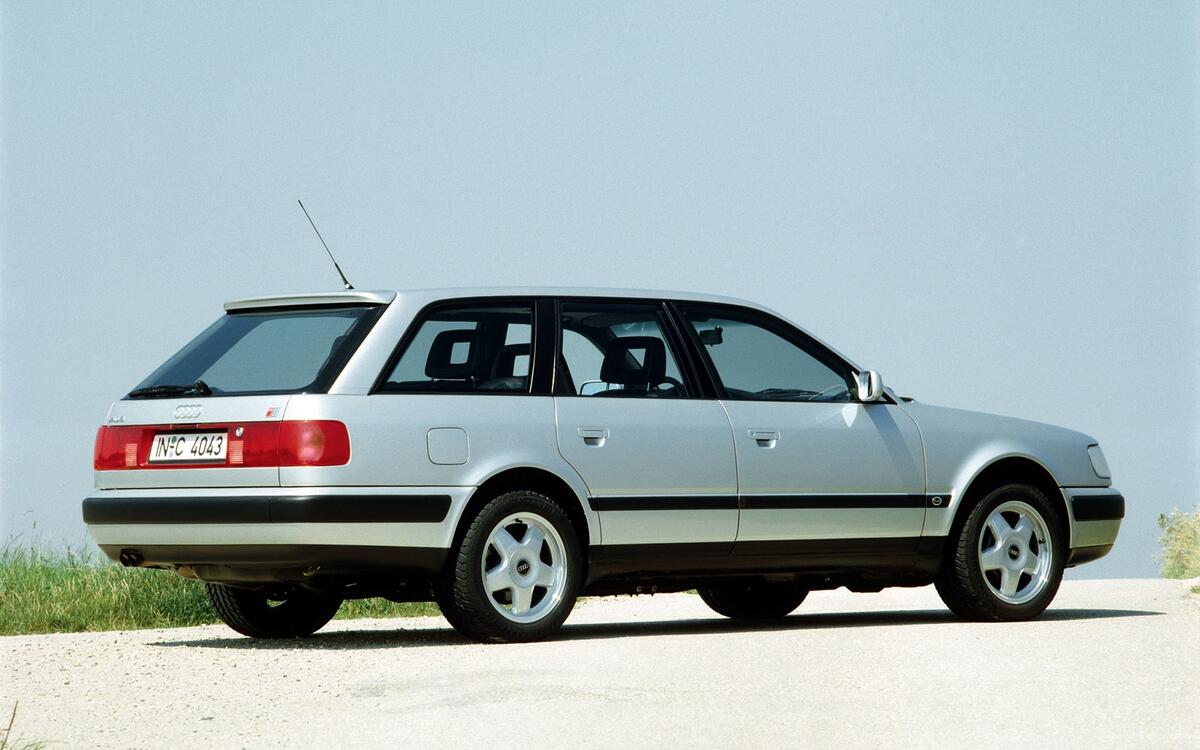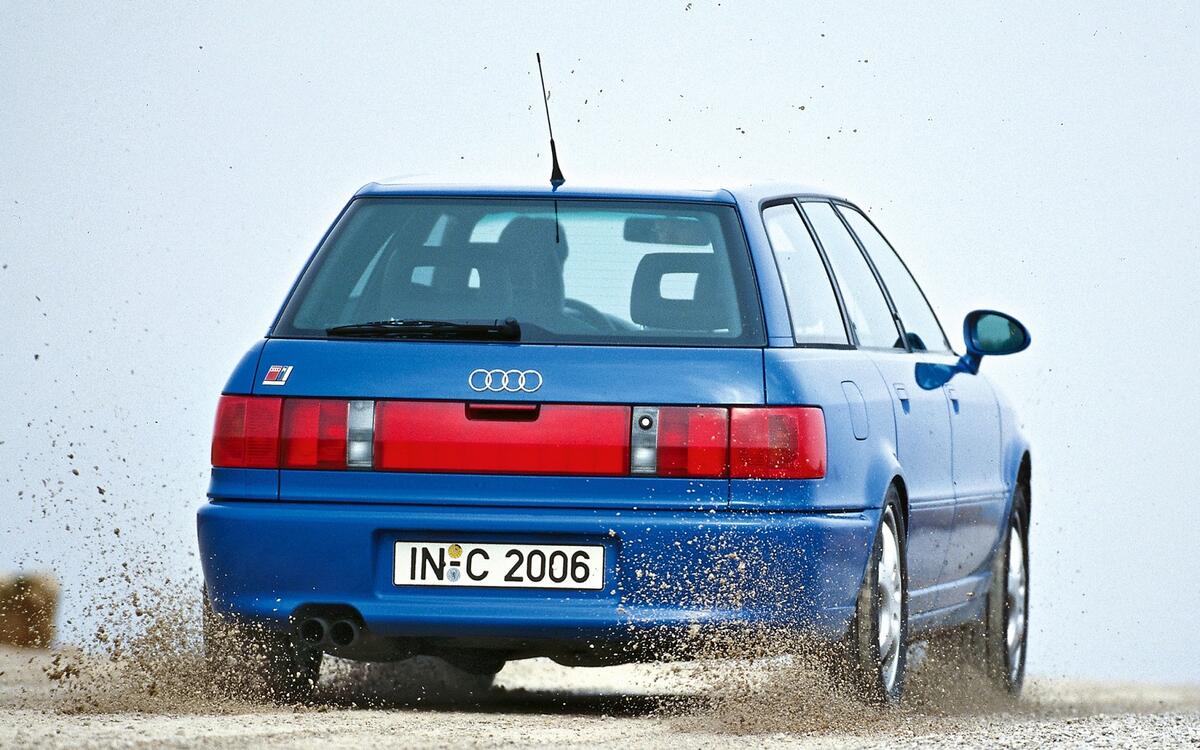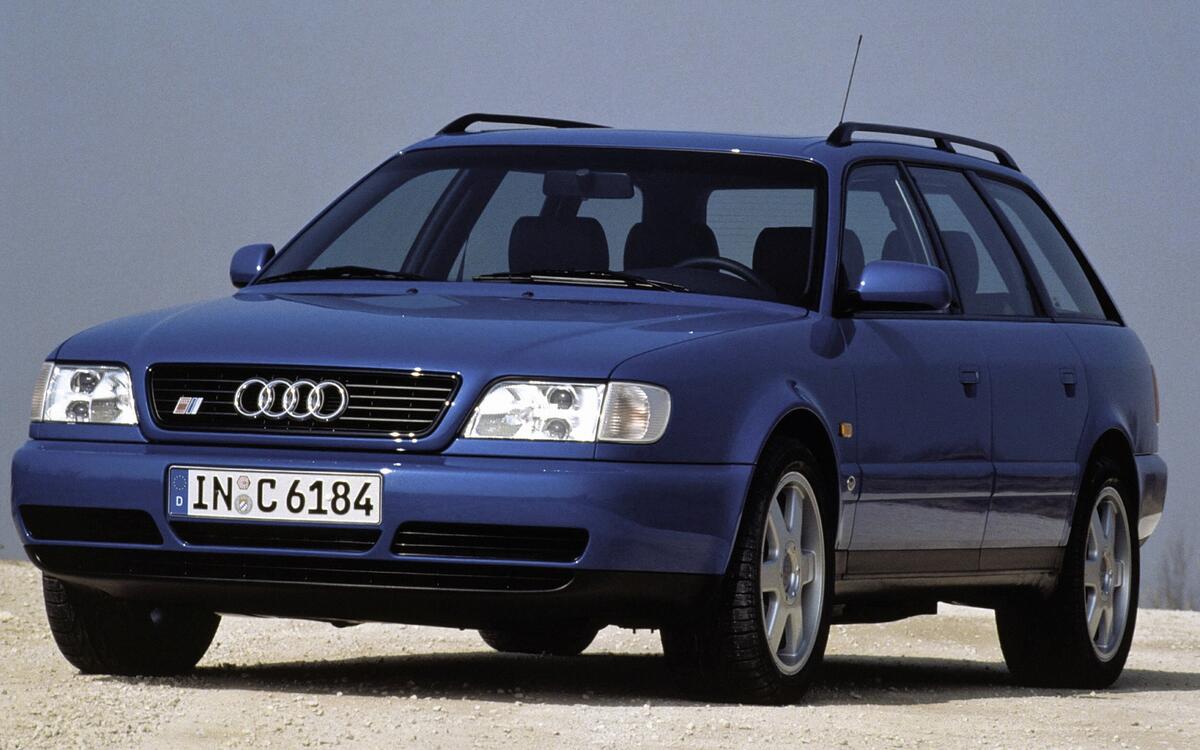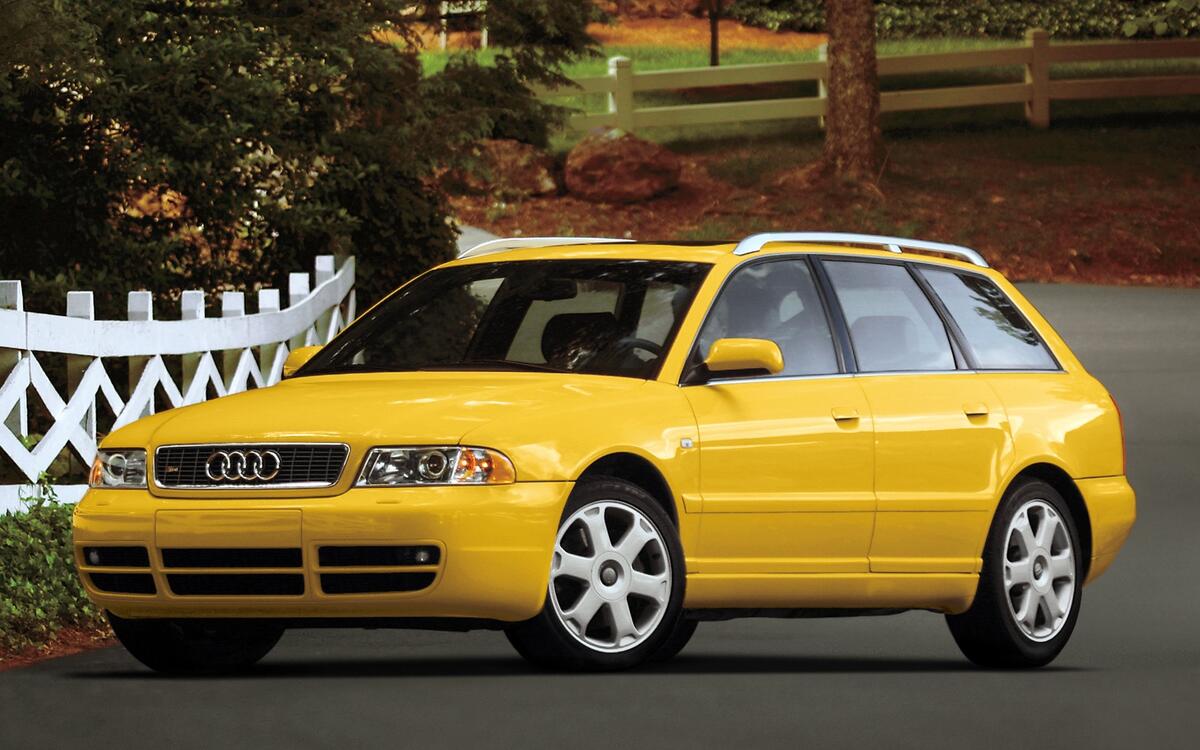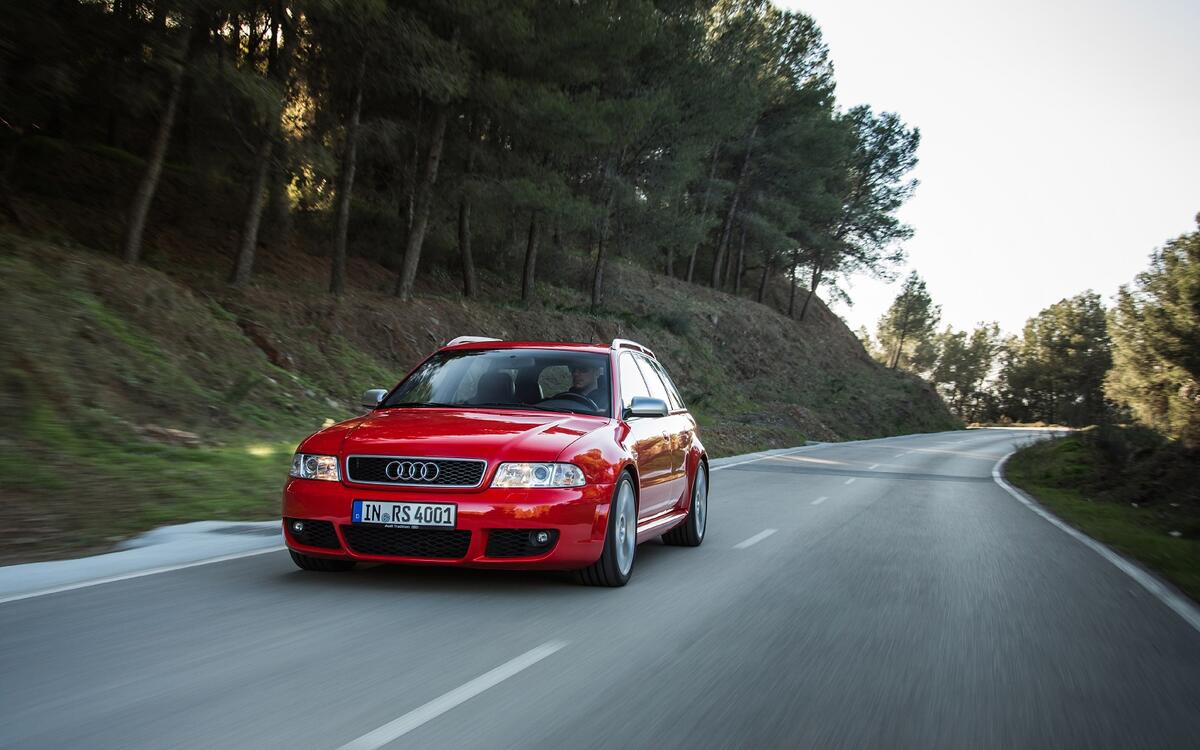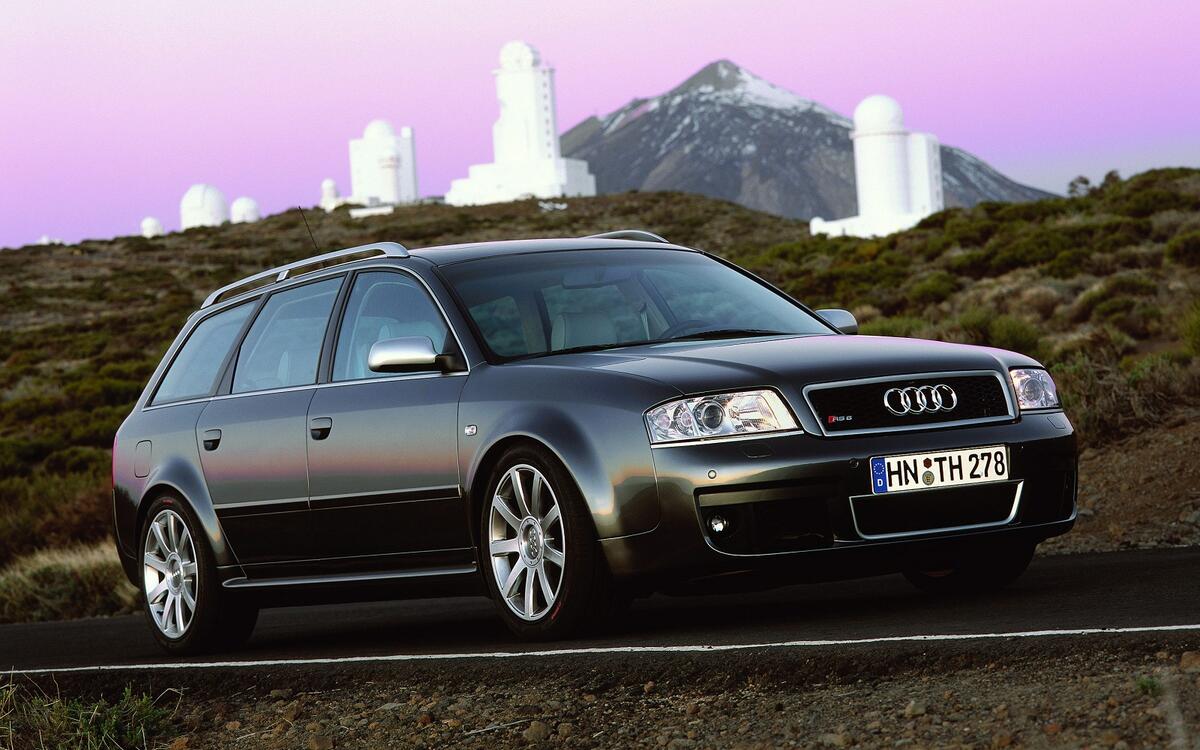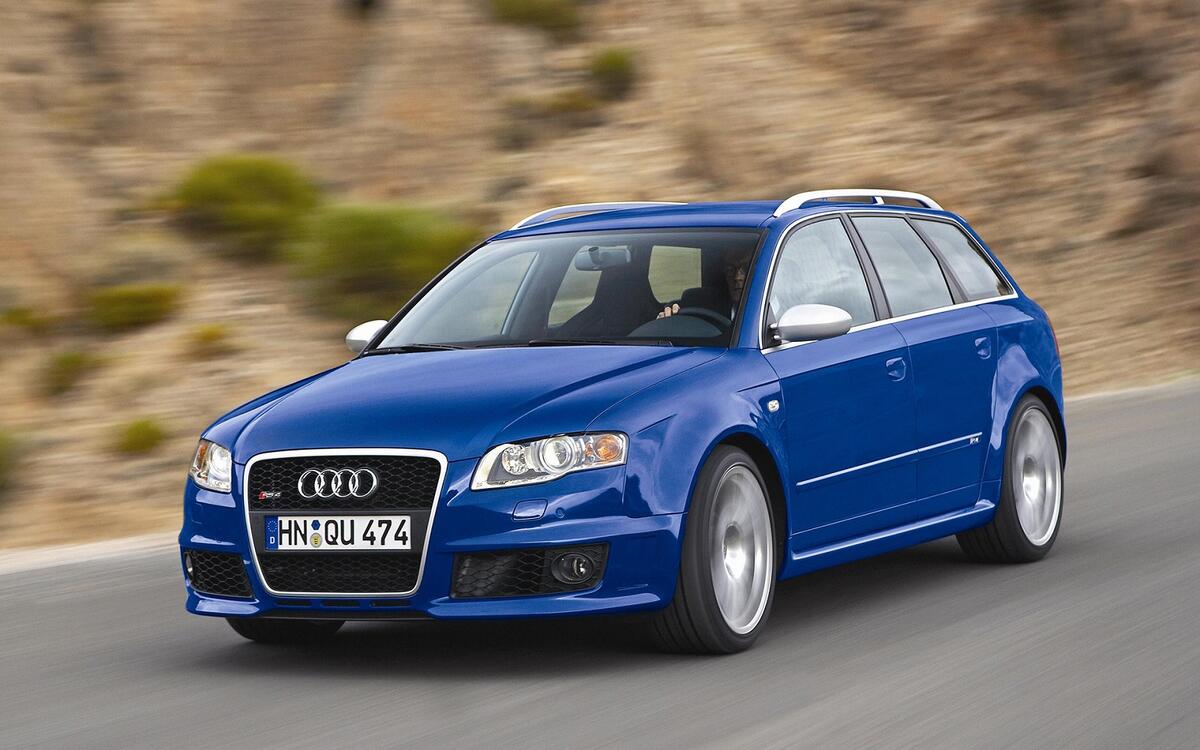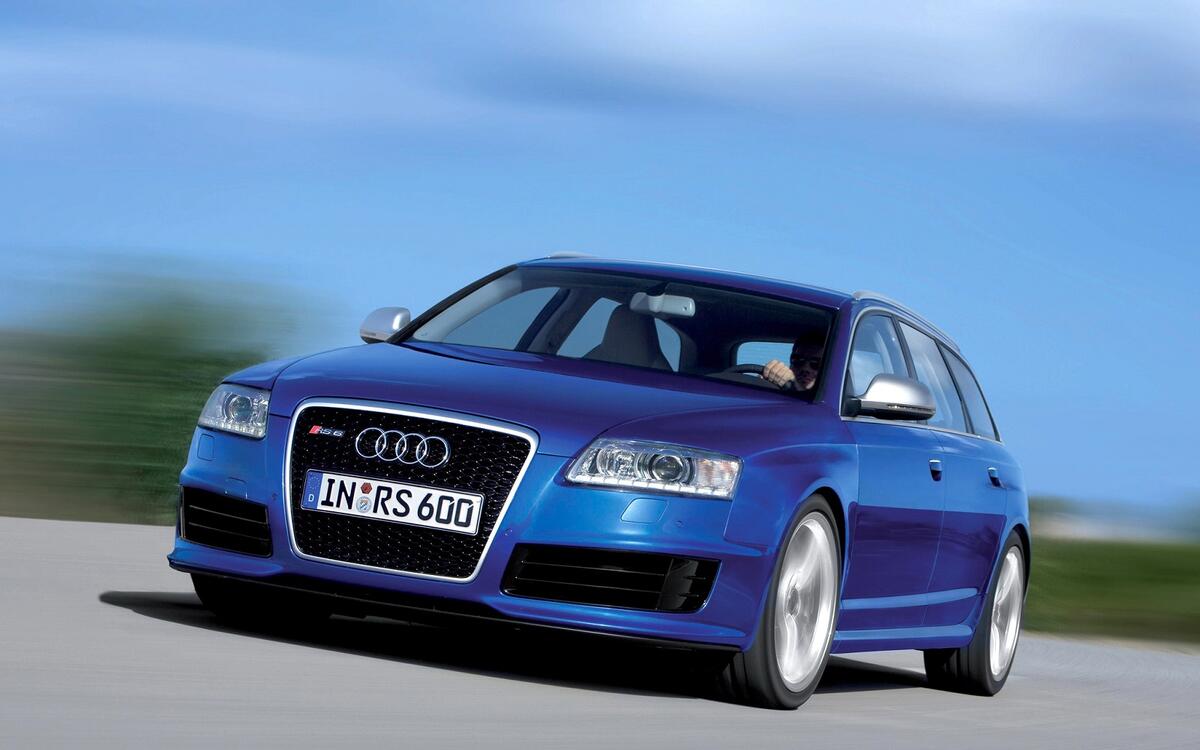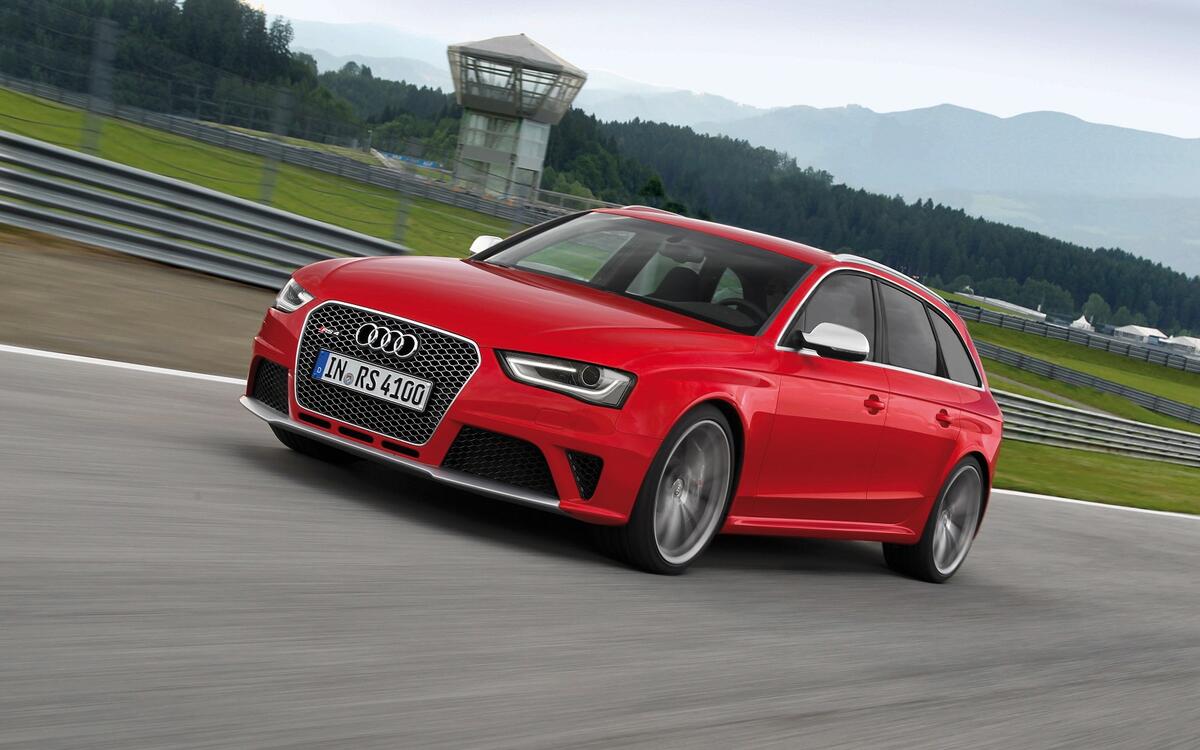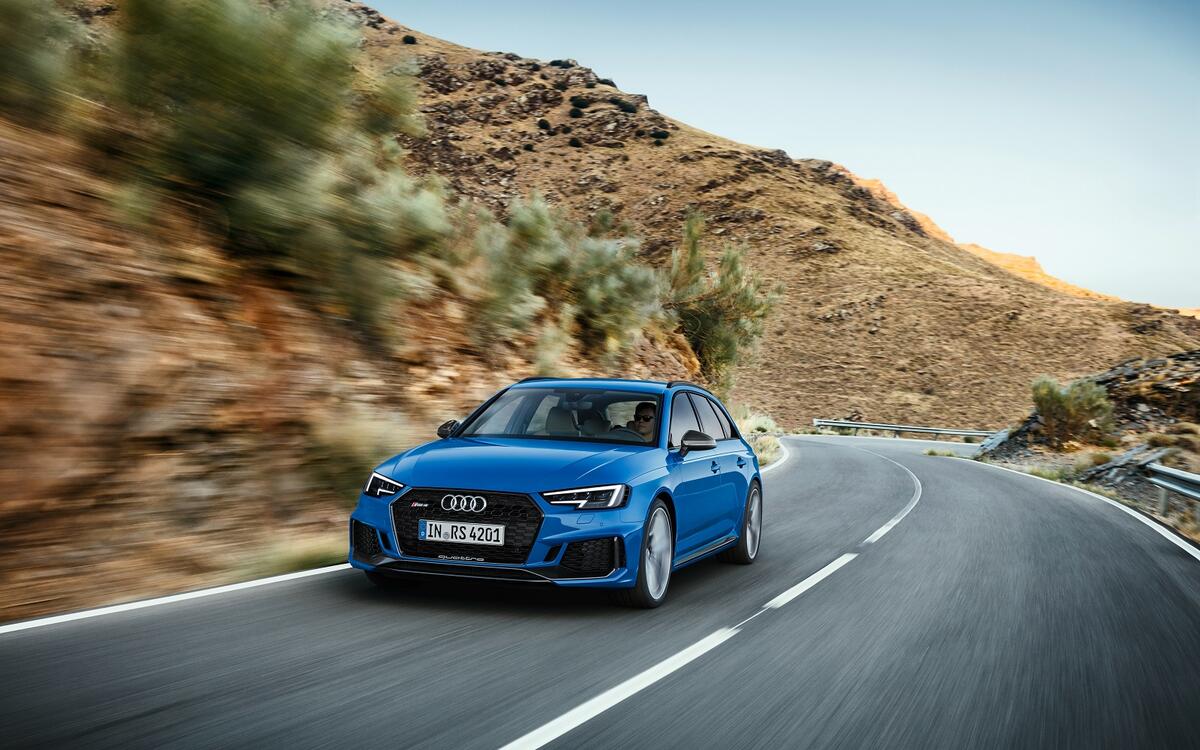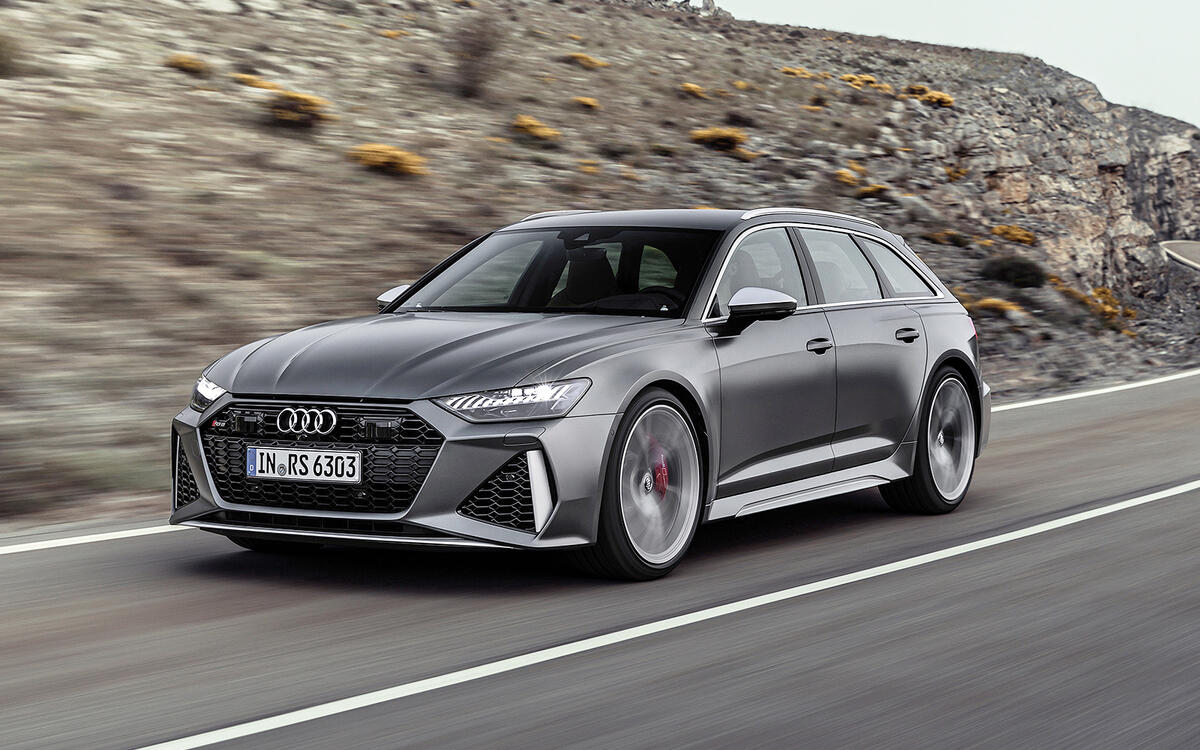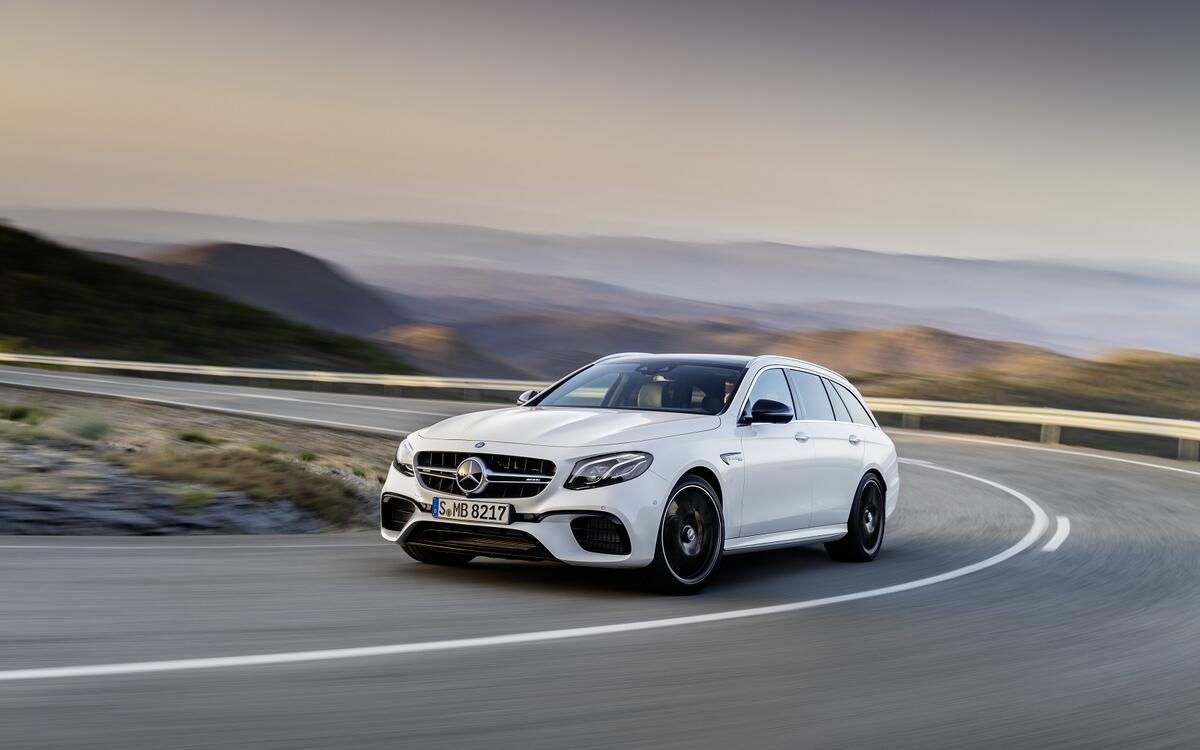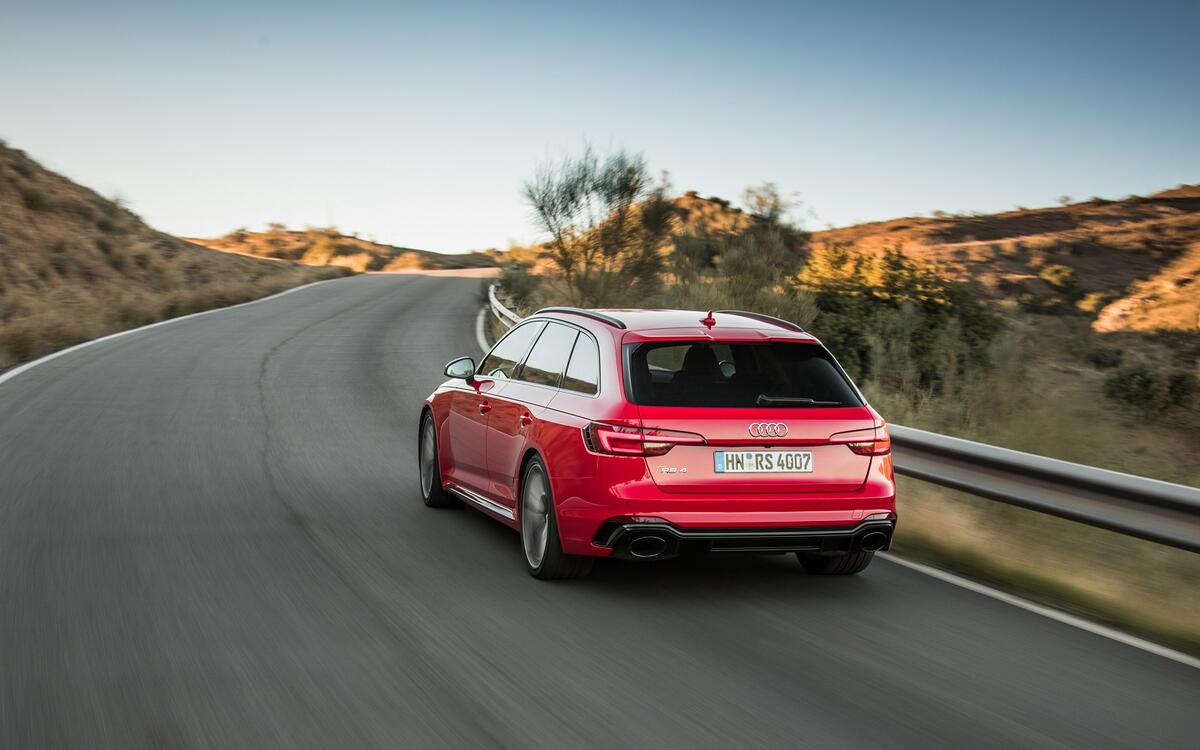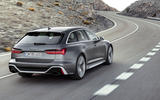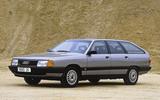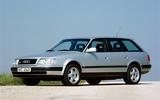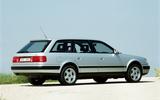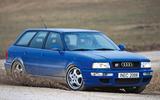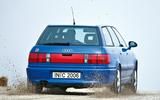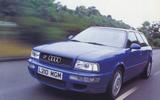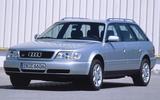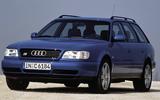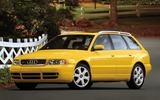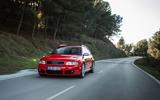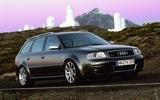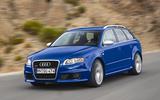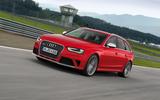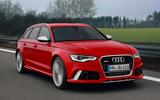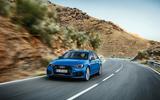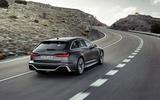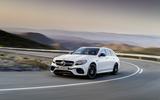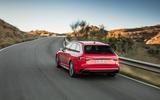 Slide of
Slide of
The fourth-generation RS 6 Avant (pictured) will arrive on our roads in 2020.
It's the latest in a long line of high-performance family cars that started in the early 1990s as a way for Audi to take a markedly different approach to sports cars than rivals BMW and Mercedes-Benz.
Join us for a look at the RS 6’s predecessors, including the original A6-sized S4 and Cosworth-powered long-roofs:
 Slide of
Slide of
Audi’s early estates
Audi has historically been much more open than its rivals to the idea of building utilitarian cars so it started making estates before BMW and Mercedes-Benz entered the class. In 1970 its line-up included a two-door, five-seater Super 90 estate.
The firm released other long-roof models like the Fox and the 100 Avant (pictured; known as the 5000 in America) in the subsequent years. They were all developed with hauling people and gear in mind, and some were reasonably quick, but none fell into the sports car category.
 Slide of
Slide of
The original S4 (C4, 1991)
Before it revamped its naming system, Audi used the S4 nameplate to denote the quickest version of the C4-generation 100. The first S4 was available as a saloon and as a station estate. Both received a turbocharged, 2.2-litre five-cylinder engine tuned to make 227bhp.
Quattro all-wheel drive was already part of the recipe and the system gave the S4 the grip it needed to deliver brisk acceleration.
 Slide of
Slide of
The S4 V8 (C4, 1992)
Audi knew the 100’s platform could handle more power so it gave customers the option of ordering the S4 with a 4.2-litre V8 starting in 1992.
The 4.2-litre engine delivered 276bhp and lowered the estate’s 0-62mph time to 6.6sec. The V8-powered saloon performed the same task in 6.2sec. Both body styles remained relatively low-key; Audi stylists refrained from adding spoilers, vents and oversized alloys.
 Slide of
Slide of
The RS 2 Avant (1994)
Turning the 80 Avant into a high-performance estate was easier said than done because it was designed to haul three kids and a dog, not to drive flat-out. Instead of taking on the project on its own, Audi’s Quattro division (today known as Audi Sport) knocked on Porsche’s door and asked for assistance.
The two carmakers started by placing a 2.2-litre five-cylinder engine turbocharged to 311bhp between the wings and making comprehensive modifications to the chassis. Quattro all-wheel drive and a six-speed manual transmission channeled the five’s output to the ground.
 Slide of
Slide of
The RS 2 Avant (1994)
Assembled by Porsche, the RS 2 Avant received alloy wheels and door mirrors borrowed from the 911 Turbo and it wore a full body kit that set it apart from the 80 Avant it was based on. The 2.2-litre five-cylinder engine allowed it to keep up with a Chevrolet Corvette down a drag strip but its antique market-friendly underpinnings made it practical enough to use as a daily driver.
Quick and versatile, it was the best of both worlds. Audi planned to make 2200 units of the RS 2 Avant. The final total is a point of debate but most in the know agree it’s in the vicinity of 2900 cars.
 Slide of
Slide of
Autocar tests the RS 2 Avant (1994)
The RS 2 Avant had a formative influence on how Audi viewed performance. It took the concept of a souped-up station wagon further than the S4 and it left our road testers flabbergasted.
“0-30mph in 1.5sec is faster than a McLaren F1,” we wrote after driving it in 1994. While we labeled its turbo boost violent, we praised its mind-blowing performance, its mind-blowing brakes, its grip and its build quality before concluding that “despite everything, it’s impossible not to like the RS 2.”
 Slide of
Slide of
The S6 (C4, 1994)
The 100 morphed into the original A6 when Audi started overhauling its naming system in 1994. The German company already planned to use the S4 nameplate on a hotter version of the then-new A4 so the quicker A6 became the S6. This change added much-needed continuity to the Audi range.
Powertrain specifications remained essentially unchanged. Still offered as a saloon and as a estate, the S6 was available with a turbocharged five-cylinder engine still rated at 227bhp and a mighty V8 whose output grew to 286bhp. Buyers could choose between manual or automatic transmission.
 Slide of
Slide of
The S6 Plus (C4, 1996)
On the surface, the S6 Plus sounds like little more than a limited-edition model built to send off the C4 platform in style. In reality, it’s hugely significant because it’s the first car that Quattro developed on its own. Power came from a 321bhp evolution of the S6’s available V8 bolted to a six-speed manual transmission. Adding 35 additional horses into the driveline lowered the 0-62mph time to 5.7sec.
Cars like the S6 Plus had a big influence on Audi’s decision to make sport estates instead of sport saloons. While the S6 Plus was available in both body styles, customers ordered 97 saloons and 855 estates. The model’s high level of performance and its roots in Quattro’s workshop make it the true predecessor of the modern-day RS 6, while the RS 2 is the estate the RS 4 traces its roots to.
 Slide of
Slide of
Audi’s new names
After 1994, Audi used the numbers 3, 4, 6 and 8 to denote the size of the cars in its range. The letters A and S referred to the level of performance they offered; it’s the same system used in 2019. The RS prefix returned to the catalog on a range-topping variant of the first-generation A4. PICTURE: Audi S4 Avant
 Slide of
Slide of
The RS 4 Avant (B5, 1999)
Released in 1999, the first RS 4 Avant picked up where the RS 2 Avant left off. It wasn’t developed with Porsche, though; Quattro confidently designed it on its own. It ditched its predecessor’s straight-five for an evolution of the S4’s twin-turbocharged, 2.7-litre V6 modified by Cosworth to generate 376bhp. Every RS 4 came with a six-speed manual transmission and Quattro permanent all-wheel drive.
Audi made about 6000 units of the RS 4 Avant by the time production ended in 2001; Audi didn’t make an RS 4 saloon.
 Slide of
Slide of
The RS 6 Avant (C5, 2002)
Audi introduced the second-generation A6 in 1997 but the RS 6 variant didn’t appear until the 2002 Geneva motor show. The company was too busy expanding its range of models to release it sooner. Wider than a regular A6, the RS 6 was fitted with a twin-turbocharged, 4.2-litre V8 rated at 444bhp. The eight-cylinder was developed and built by Cosworth, which Volkswagen owned between 1998 and 2004. The RS 6 Avant got a starring role in the (increasingly well-regarded) 2004 British gangster film, Layer Cake.
Executives saw a golden opportunity to lock horns with BMW M and Mercedes-AMG on the lucrative American market so they approved the launch of an RS 6 saloon. It arrived shortly after the estate. About 8000 units of the first RS 6 were built, including 999 limited-edition cars named RS 6 Plus equipped with a sport exhaust system, 19in wheels, a firmer suspension and a 473bhp engine.
 Slide of
Slide of
The RS 4 Avant (B7, 2005)
Audi didn’t turn the B6-generation A4 into an RS 4, though the line-up included a range-topping S4 with a 335bhp V8. The second-generation RS 4 introduced in 2005 was consequently an evolution of the third-generation A4. The firm shockingly broke with tradition because it unveiled the model only as a saloon. The company didn’t release the estate variant until halfway through 2006 and it added a convertible to the range a little bit later. All three body styles moved up in the sports car pecking order with a high-revving, naturally-aspirated 4.2-litre V8 that made 414bhp.
The B7-generation RS 4 stood out with a more muscular design than its predecessor. Flared wheel arches covered a wider track and sizable air vents chiseled into the front bumper directed air into the engine bay. Audi made about 14,368 units of the RS 4, a figure broken down into 7657 saloons, 5204 estates and 1507 convertibles. Most of the production run remained in Europe but Audi made the saloon and the convertible available in the United States.
 Slide of
Slide of
The RS 6 Avant (C6, 2007)
The third-generation A6 arrived in 2004 but enthusiasts knew not to expect a new RS 6 Avant right away. Audi unveiled the model at the 2007 Frankfurt auto show. It was well worth the wait; engineers shoe-horned a 572bhp, 5.0-litre V10 into the engine bay. It wasn’t as closely related to the engine found in the Lamborghini Gallardo as many claimed, though the two look a lot alike on paper.
Audi made saloon and estate variants of the C6-generation RS 6 though oddly perhaps neither was sold in the land of cheap petrol, the USA. Production ended in 2010 after 4674 units were made; 83% of buyers selected the estate.
Here again, the RS 6 was offered with several option packages that added visual add-ons like specific floor mats and carbonfiber trim, different wheels and suspension tweaks. The Plus model’s top speed rose to 188mph, a 33mph increase over the regular RS 6.
 Slide of
Slide of
The RS 4 Avant (B8, 2012)
Audi traveled to the 2012 Geneva auto show to introduce the third-generation RS 4. While its predecessor was far more popular as a saloon than as a estate, the B8-based model was only offered in the latter body style, a decision Audi took to help it stand out in a growing field of rivals.
The RS 6’s V10 didn’t fit under the bonnet so the RS 4 carried on with an evolution of the B7’s 4.2-litre V8 tuned to 444bhp. Bolted to a seven-speed automatic transmission, the eight-cylinder allowed the RS 4 to reach 62mph in 4.7sec and cruise at nearly 175mph on the unrestricted sections of Germany’s autobahn.
 Slide of
Slide of
The RS 6 Avant (C7, 2013)
The third-generation RS 6 Avant surfed the downsizing wave sweeping across the industry. Instead of a V10, it went back to its roots with a twin-turbocharged, 4.0-litre V8 that made 552bhp in its most basic state of tune. Using a smaller engine improved fuel efficiency and helped make the estate 100kg lighter than its predecessor.
The idea of a V10-powered RS 6 sounded great on paper but drivers quickly became aware they had 10 cylinders hanging over the car’s nose when going around a bend. Quattro permanent all-wheel drive came standard, of course. Audi quoted a 0-62mph time of 3.9sec.
As it had done before, Audi gave buyers the option of unlocking additional performance by selecting an extra-cost option package. The RS 6 Avant Performance introduced in 2015 offered enthusiasts a 597bhp evolution of the regular RS 6’s V8 that cut its 0-62mph time to a supercar-like 3.7sec.
 Slide of
Slide of
The RS 4 Avant (B9, 2017)
The RS 4 Avant entered its fourth generation at the 2017 Frankfurt auto show. It couldn’t escape downsizing; it arrived with a 2.9-litre, twin-turbocharged V6 shared with some members of the Porsche line-up. This is the first RS 4 sold in China so using a relatively small, fuel-efficient engine was important.
While it lost a pair of cylinders, it managed to offer the same 444bhp output as its V8-powered predecessor. This generation of the RS 4 is only available as an estate and it’s still in production as of 2019.
 Slide of
Slide of
The RS 6 Avant (C8, 2019)
Audi introduced a new RS 6 Avant during the 2019 Frankfurt motor show. Much has changed during the leap from the third to the fourth generation of the nameplate. It wears a more muscular design characterised by front-end parts borrowed from the second-generation RS 7 Sportback.
It only shares its front doors, its roof panel and its boot lid with the A6 and S6 Avant. “This is Darth Vader. It’s the autobahn killer,” designer Francesco d’Amore told Autocar during the car’s unveiling.
 Slide of
Slide of
The RS 6 Avant (C8, 2019)
The RS 6’s twin-turbocharged, 4.0-litre V8 engine makes 591bhp, a figure that brings it within a stone’s throw of the last-generation RS 6 Performance. The eight-cylinder relies on a 48-volt mild hybrid system to keep its fuel consumption in check. The big news is that Audi confirmed the RS 6 Avant will finally be sold in the United States starting in early 2020.
Autocar learned that, like its predecessors, the C8-generation RS 6 will spawn a Performance- or Plus-badged model. It will make its debut in about 2021 and it might arrive as a plug-in hybrid.
 Slide of
Slide of
High-performance estates in 2019
Audi didn’t create the high-performance station estate class - we could argue BMW did when it released a wagon version of the E34 M5 in 1992, but it invested more into it than anyone else. Volvo was a serious contender during the 1990s when it fabulously marketed detuned touring cars as family haulers but it has gotten a lot tamer since. Its go-fast days are over. BMW left the class when production of the E60-generation M5 Touring ended in 2010, though Alpina will happily sell you a B5 Touring, a 4.4-litre V8-powered wagon that delivers 600bhp and a 202mph top speed.
This leaves Mercedes-AMG as Audi’s biggest rival. The C63 competes in the same class as the RS 4 Avant, while the E63 (pictured) locks horns with the RS 6 Avant. Both use the same twin-turbocharged, 4.0-litre V8 engine. It makes up to 496bhp in the C and up to 595bhp in the E.
 Slide of
Slide of
What’s next? (2019 and beyond)
The RS 6 Avant’s imminent arrival in America doesn’t mean the floodgates are about to open. Filip Brabec, Audi of America’s vice president of product planning, told Autocar that enthusiasts waiting for the smaller RS 4 Avant (pictured) to arrive in the United States shouldn’t hold their breath.
Looking ahead, Audi confirmed to Autocar that the next-generation RS 4 Avant will arrive in the early 2020s with a plug-in hybrid powertrain. The electric motor will be capable of powering the estate on its own for short distances but Audi Sport co-director Oliver Hoffmann stressed engineers are developing the system with an eye on performance, not maximum efficiency.
The RS 6 Avant is the latest in a long line of grocery-getters built to haul anything
Advertisement


